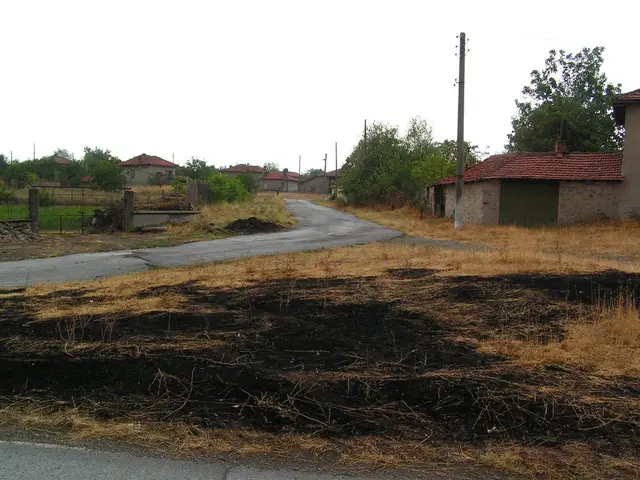Public Trials of Russian Allergy Vaccine for Cats Set to Commence
Revolutionary Cat Allergy Vaccine Alleviates Symptoms for Millions
📷 This photo is courtesy of Shutterstock.
In groundbreaking research, a team of scientists from Sechenov University (Russia) and Vienna Medical University (Austria) have unveiled the world's first recombinant vaccine for addressing cat allergies. This pioneering innovation displays an efficacy rate of 85% and has the potential to significantly reduce treatment periods when compared to traditional methods. The incredible findings were published in the revered journal Allergy. Human clinical trials lie ahead, determining the vaccine's future impact.
Approximately 25% of people globally combat cat allergies, with symptoms ranging from nasal congestion, skin rashes to asthma. These reactions are initiated by proteins Fel d1, Fel d4, and Fel d7 found within cat saliva and fur. Conventional therapy, allergen-specific immunotherapy (AIT), requires numerous injections of allergen extracts, which may cause side effects and may not tackle all protein variants.
"Conventional medications are tough to dose, and their effectiveness is limited," says Alexander Karaurov, the study's lead researcher.
Got a Question?
👉 Towel on a neck from Crimea: Is it worth visiting the coveted peninsula before the summer heat and crowds at the beach?👉 How does the new vaccine work?
Utilizing biological insights, scientists identified essential fragments of allergenic proteins (peptides) that induce reactions. These fragments were then bound to the PreS protein, a compound that amplifies the immune response and decreases the risk of complications. With genetic engineering, five vaccine forms were devised, two of which demonstrated exceptional outcomes.
Experiments on rabbits confirmed that upon receiving two vaccinations, the new vaccine suppresses up to 85% of allergic reactions, surpassing existing treatments. It's worth noting that traditional treatment protocols necessitate 6 to 15 injections. Notably, the vaccine's antibodies also provide moderate protection against dog (Can f1) and horse (Equ c1) allergens, suggesting possible broader applications.
The researchers are now preparing for human trials. If the trials prove successful, millions of allergy sufferers could gain a safe and swift solution, enjoying interactions with pets without fearing for their health. The project is supported by a Russian Science Foundation grant "Allergochip RF" (No23-75-30016).
More Options to Consider:
👉 Up to 100 Years and Beyond: Maintaining Muscle Strength and Bone Density for Life👉 How to Treat Scrapes with Waffles
How the Recombinant Vaccine Works
- Targeted Immune Modulation: PreS-Cat triggers the creation of antibodies that block basophil activation, reducing allergic inflammation.
- Increased IL-10 Production: IL-10, an anti-inflammatory cytokine, helps regulate immune responses, leading to reduced allergy symptoms.
- Hypoallergenic Design: The vaccine's hypoallergenic design lowers the risk of adverse allergic reactions associated with whole allergen extracts.
Benefits Compared to Traditional Methods
Traditional cat allergy treatments usually consist of avoidance, symptomatic treatment with antihistamines or corticosteroids, or allergen immunotherapy using cat allergen extracts:
- Safety: The recombinant vaccine's hypoallergenic design reduces the risk of adverse allergic reactions due to the use of whole allergen extracts in conventional methods.
- Efficacy: By specifically stimulating immune tolerance mechanisms like IL-10 production and preventing basophil activation, the recombinant vaccine offers profound and targeted immunomodulation.
- Convenience and Compliance: Recombinant vaccines can be engineered for more controlled dosing and potentially reduce treatment duration or frequency.
- Novel Immune Pathways: The vaccine targets protective IgG antibodies that effectively block allergen interaction with IgE on effector cells, a mechanism that traditional methods may trigger poorly[4].
The development of such recombinant vaccines signifies a crucial advance because they aim to re-educate the immune system more precisely and safely, addressing the root cause of allergies rather than solely managing symptoms.
In summary, the revolutionary cat allergy vaccine employs hypoallergenic, targeted immune modulation to inhibit allergic pathways more effectively and safely than traditional allergen immunotherapy, offering improved patient outcomes and potentially better compliance[1][2][4].
- This cat allergy vaccine is a breakthrough in the field of science, as it addresses a common medical condition that affects millions worldwide.
- The science behind this vaccine was carried out by a team of researchers from Sechenov University and Vienna Medical University.
- The new vaccine has shown an efficacy rate of 85%, potentially reducing treatment periods when compared to traditional methods.
- The findings of this research were published in the journal Allergy.
- Human clinical trials are now necessary to determine the vaccine's future impact.
- Approximately 25% of people globally suffer from cat allergies, with symptoms ranging from nasal congestion to asthma.
- These reactions are initiated by proteins such as Fel d1, Fel d4, and Fel d7 found within cat saliva and fur.
- Conventional therapy, known as allergen-specific immunotherapy (AIT), requires numerous injections of allergen extracts and comes with potential side effects.
- The new vaccine utilizes biological insights to bind essential peptides of allergenic proteins to the PreS protein.
- Five vaccine forms were devised, two of which demonstrated exceptional outcomes in experiments on rabbits.
- Upon receiving two vaccinations, the new vaccine suppresses up to 85% of allergic reactions, surpassing existing treatments.
- Traditional treatment protocols necessitate 6 to 15 injections, making the new vaccine more convenient and potentially increasing compliance.
- The new vaccine's antibodies also provide moderate protection against dog and horse allergens, suggesting possible broader applications.
- The researchers are now preparing for human trials, with millions of allergy sufferers potentially benefiting if the trials prove successful.
- The project is supported by a Russian Science Foundation grant named "Allergochip RF" (No23-75-30016).
- In addition to this cat allergy vaccine, there are other options to consider, such as maintaining muscle strength and bone density for life or treating scrapes with waffles.
- The recombinant vaccine works by triggering the creation of antibodies that block basophil activation, reducing allergic inflammation.
- The vaccine increases IL-10 production, an anti-inflammatory cytokine that helps regulate immune responses, leading to reduced allergy symptoms.
- The vaccine's hypoallergenic design lowers the risk of adverse allergic reactions associated with whole allergen extracts in conventional methods.
- Traditional cat allergy treatments consist of avoidance, symptomatic treatment with antihistamines or corticosteroids, or allergen immunotherapy using cat allergen extracts.
- The recombinant vaccine is safer due to its hypoallergenic design and offers profound and targeted immunomodulation.
- The vaccine's convenience and controlled dosing could potentially reduce treatment duration or frequency.
- The vaccine targets protective IgG antibodies that effectively block allergen interaction with IgE on effector cells, a mechanism that traditional methods may trigger poorly.
- The development of such recombinant vaccines marks a significant advance in the field of health-and-wellness, as they aim to re-educate the immune system more precisely and safely.
- The new vaccine addresses the root cause of allergies, offering improved patient outcomes.
- In the workplace-wellness sector, this vaccine could improve employee health and productivity by reducing Cat-related allergic reactions.
- This vaccine could also have implications for people suffering from chronic-diseases, such as respiratory conditions, digestive health issues, eye-health problems, and neurological-disorders.
- In the broader context, this vaccine represents a step forward in the fight against symptoms caused by medical-conditions, cancer, and autoimmune disorders, contributing to the ongoing evolution of medicine and health-and-wellness industries.








